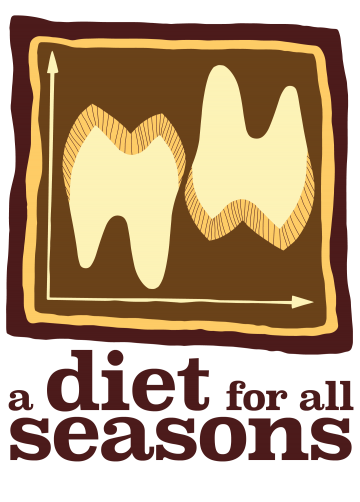A Diet for all Seasons
A Diet for all Seasons
A diet for all seasons: the role of intra-annual variability in the evolution of hominin diet in East Africa

Dietary change is a major driver of evolution amongst mammals, including early hominins (members of the human lineage). Recent developments in stable isotope analysis have revolutionized our understanding of early hominin biology and behaviour by allowing quantification of aspects of the diets of individual fossil hominins.
Carbon isotope analyses of fossil hominin teeth have revealed a major dietary transition after 4 million years ago (Ma), from a concentration on C3 plants (leaves, fruit and nuts from trees, shrubs, and herbs) to diets extended to include tropical C4 plants (grasses and sedges) and/or animals. The biological significance of this innovation, and its relationship to the expansion of seasonal grass-dominated environments, remains unclear. The degree to which individuals relying on C4-based resources shifted their diet seasonally to include more C3 foods when available, or specialized in C4-based foods year-round, has profound implications for the selective pressures associated with resource availability and competitive interactions with other mammals. We know that the proportions of C4 resources varied strongly between individuals after ca. 3.9 Ma, suggesting unusual individual flexibility.
Indirect evidence from living human and non-human primates suggests that hominin diets may also have varied seasonally, yet there is no direct evidence on the scale and pattern of such variability. The aim of this study is to evaluate the evolution of dietary variability in fossil hominins in eastern Africa from 4 to 1 Ma. Previous isotopic analyses of hominin fossils demonstrate substantial dietary variability between hominin individuals among some species. However, they relied on generating a single bulk isotope value per tooth, and therefore could not address variability within the lifetimes of individuals. Mammal teeth grow incrementally, and intra-tooth stable isotope profiles represent life-history archives of individual humans or animals during the period of tooth formation. Thus it is possible to measure seasonal-scale diet changes in fossil hominins and other primates by generating multiple isotope values per tooth using laser ablation microsampling. This approach has been successfully applied to a wide range of mammalian herbivores, as well as humans, and fossil hominins from South Africa. The latter study, conducted over 10 years ago, is significant because it demonstrates the validity of this approach in hominins, but it was not possible to evaluate long-term changes in dietary variability due to the restricted time span of fossils preserved in southern Africa. This approach has not yet been extended to eastern African fossil hominins, due to restrictions on isotopic sampling of fossil specimens.
With the collaboration and full support of the National Museums of Kenya, it is now possible to evaluate long-term changes in dietary variability in eastern Africa using fossil hominins spanning the last 4 Ma. For comparison, we will also include extinct baboons, which show a dietary transition towards increasing reliance on C4 foods that partly mirrors hominins, to understand the relationship between C4-feeding and intra-annual dietary variability in a parallel lineage of terrestrial, large-bodied primates. To provide a modern baseline to ground other ecological inferences in the fossil record, we will conduct an isotopic study on modern savanna-dwelling baboons, which are often used as ecological models for early hominins. We use feces to provide an isotopic record of diet with high time resolution, easily capable of recording seasonal-scale changes, to better understand how carbon isotopes track known seasonal variation in the consumption of grasses and sedges, and what influences these shifts. Isotopic variation in feces will be compared to enamel from teeth collected from the same population.



